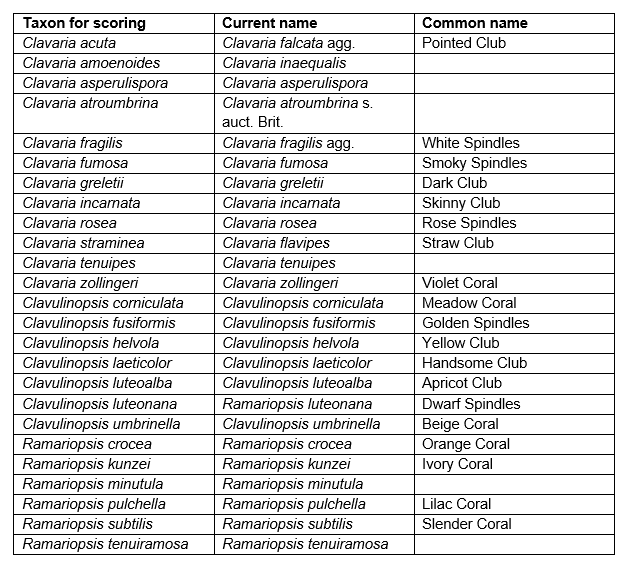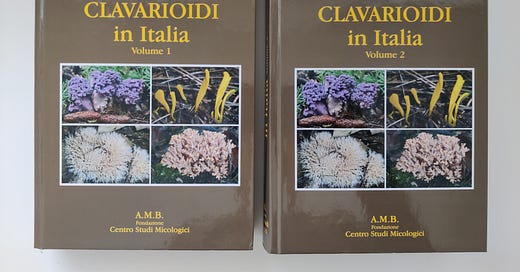Grassland clavarioid fungi of Great Britain: Introduction
Learning to recognise clubs, spindles and corals (clavarioid fungi), one species at a time
I got a new set of books for Christmas - I FUNGHI CLAVARIOIDI in Italia - and I’m scared to use them: they are so big and heavy (and italian).

So I thought I’d set myself a challenge, to up my motivation, and see how far I can get listing clavarioid fungi that occur in grassland habitats, in Great Britain.
‘Clavarioid fungi’ is a broad term describing fungi which are commonly known as ‘clubs, corals and spindles’. They are all basidiomycetes (holding their spores on structures called basidia) but DNA sequencing has placed them in various different genera.
At this point, I’m only familiar with a handful of species. I don’t even know how many species of clavarioid fungi occur in grassland habitats in Great Britain, or how rare most of them are. So I don’t know if this will be a short or a long series of posts. We will find out!
I do know that in the Joint Nature Conservation Committee (JNCC) Guidelines for the Selection of Biological Sites of Scientific Interest (SSSIs): Chapter 14 Non-lichenised fungi they list 25 distinct species:

My intention is to post about the clavarioid fungi that I find in grasslands, one at a time, and I’ll be trying out the following rating system:
Identification difficulty:
⭐ Identifiable in the field: easy to identify, if you are familiar with distinctive field characters
⭐⭐ Identifiable in the field (with experience): could be confused with similar-looking species
⭐⭐⭐ Identifiable only with observation of microscopic characters.
I am very open to feedback on the observations and identifications that I will be sharing! Please feel free to leave comments below.



